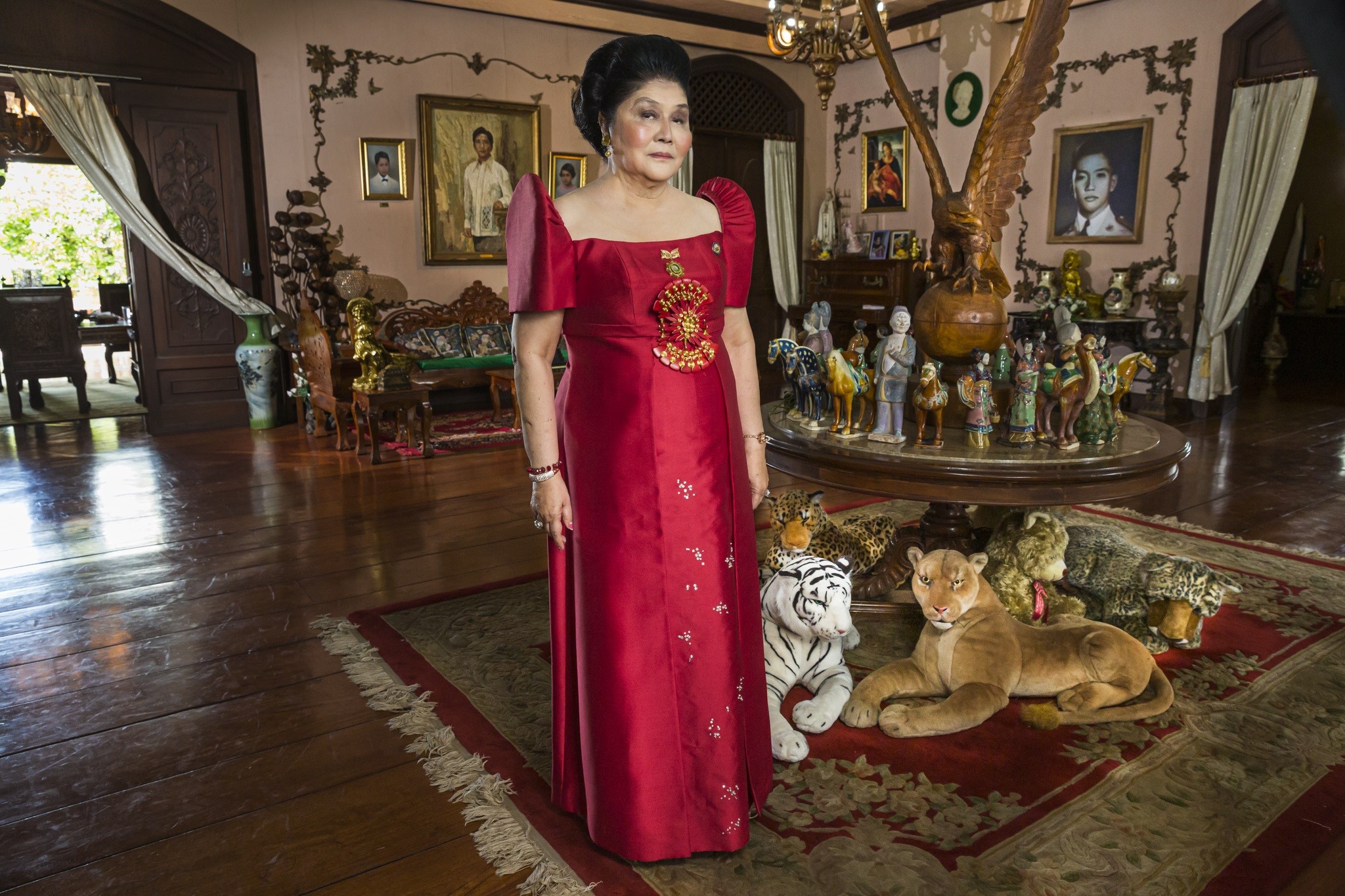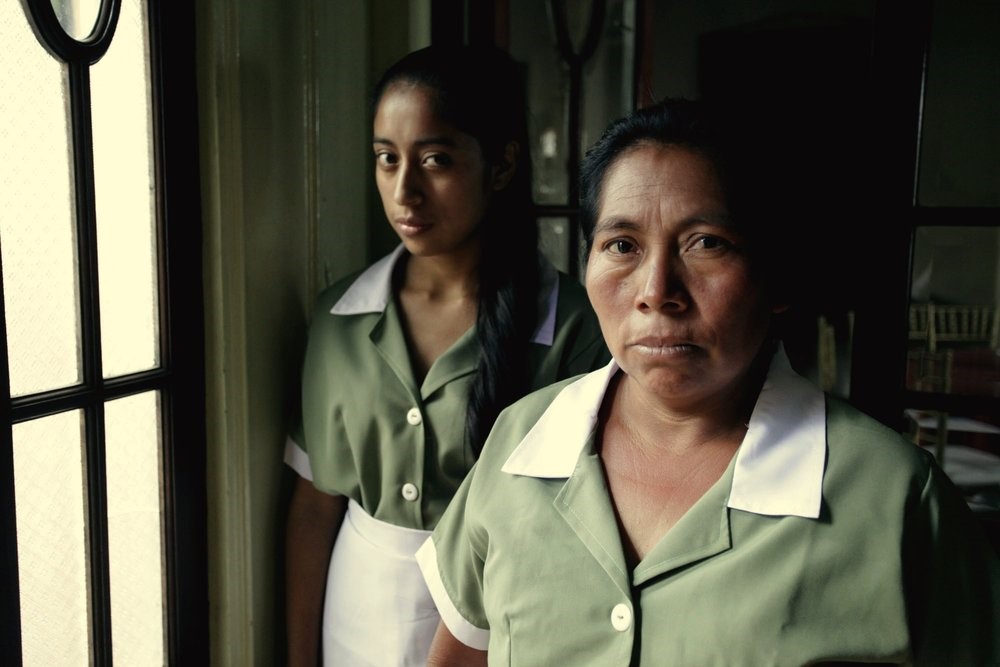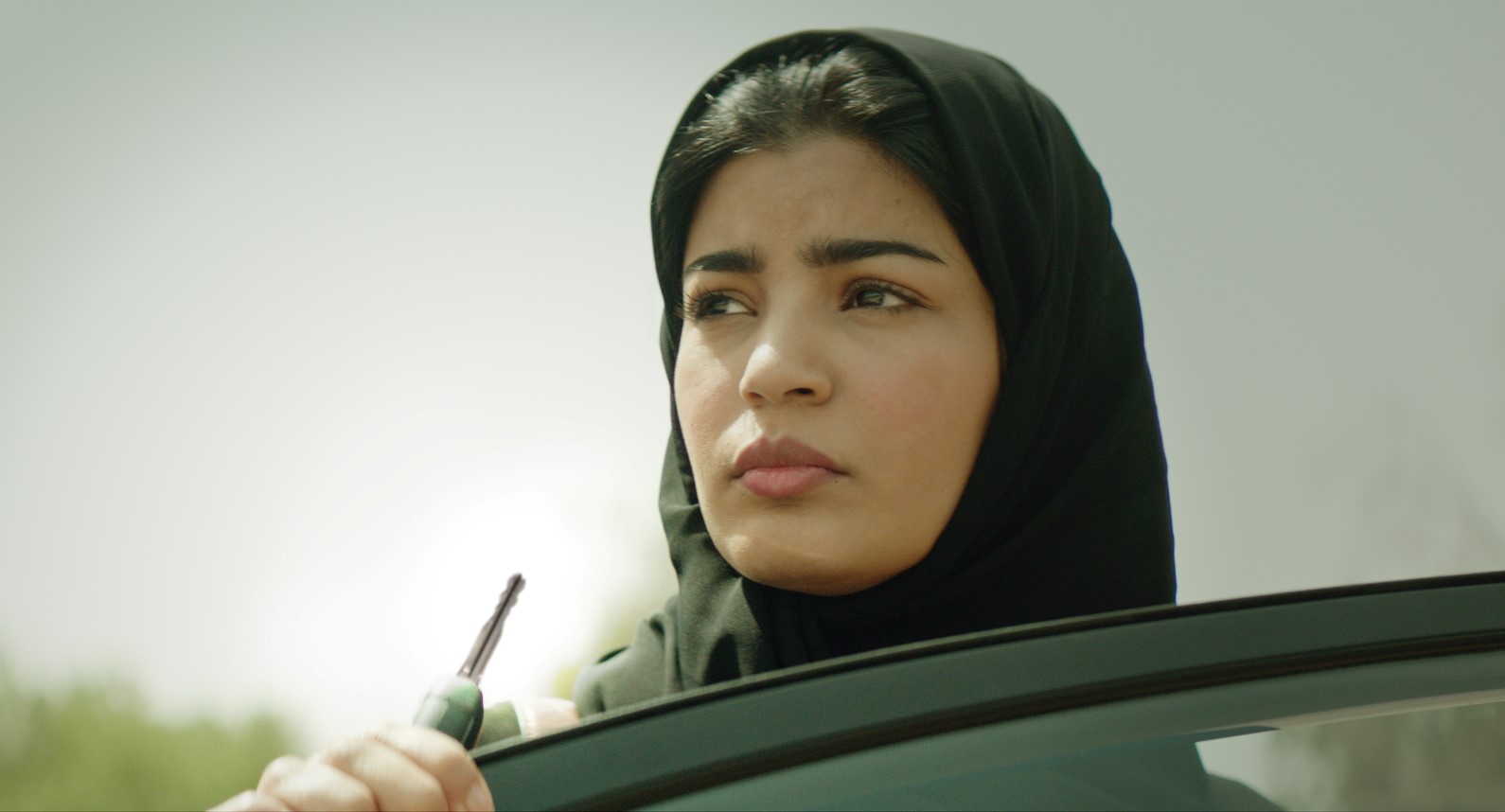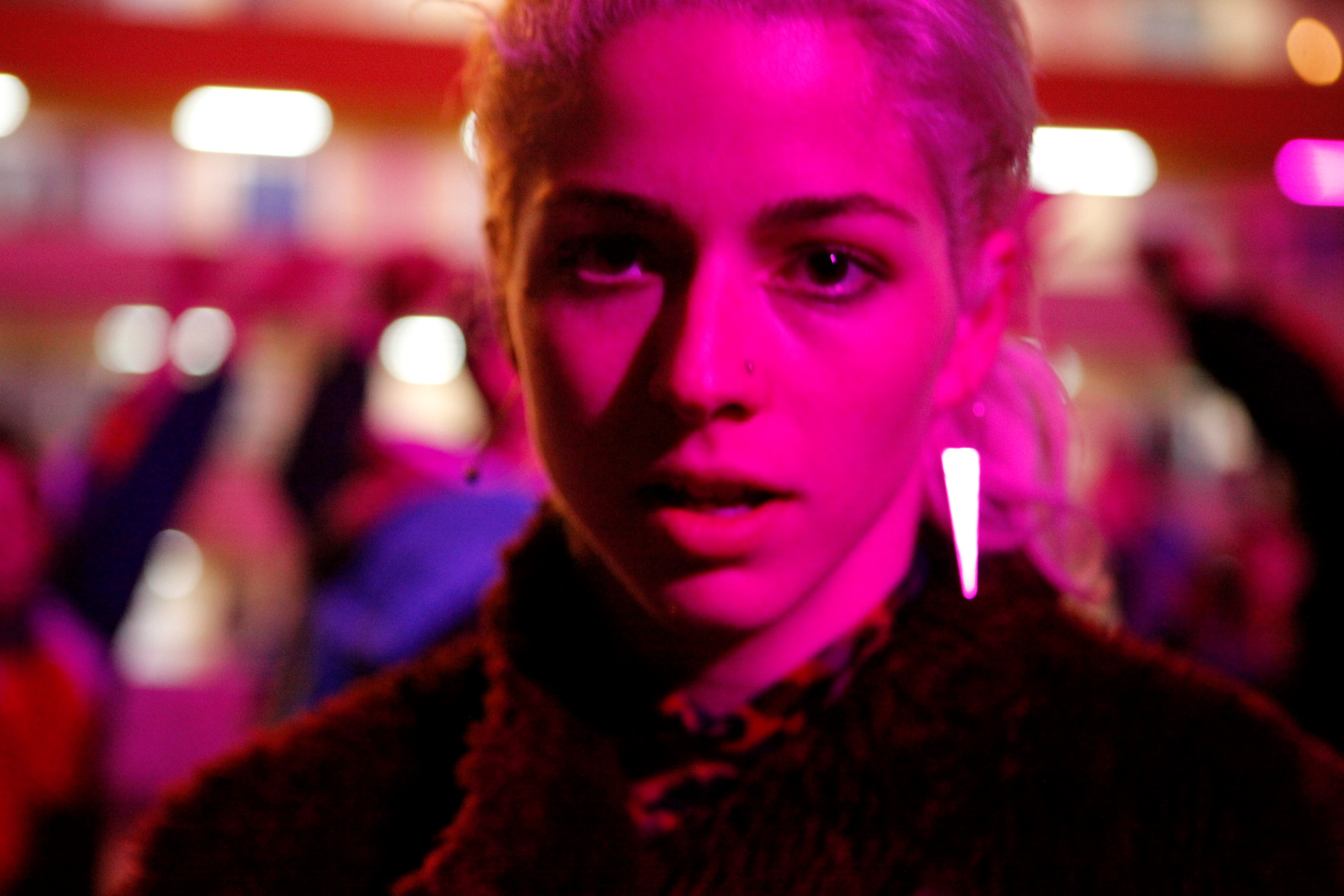The Extraordinary Women of the Lido: The 76th Venice International Film Festival
Skip other details (including permanent urls, DOI, citation information)
: This work is licensed under a Creative Commons Attribution-NonCommercial-NoDerivatives 4.0 International License. Please contact [email protected] to use this work in a way not covered by the license.
For more information, read Michigan Publishing's access and usage policy.
Long before the films took center stage at the Lido this year, and even throughout the entire Venice festival, two headlines dominated discussions. One concerned the dearth of women directors in the Competition line-up—a meagerly two, up from one in 2018. What is more, of the nineteen spots reserved for men, one fell to Roman Polanski, who fled the United States in 1978 while awaiting sentencing for statutory rape. (Since Italy has an extradition agreement with the US, the director did not attend.) The festival also rolled out the red carpet for Nate Parker and for the ‘version integrale’ of Gaspar Noe’s extremely violent Irreversible. With so much to shake your head about or raise your fist, it almost went unnoticed that there were three Netflix productions in the Competition (Noah Baumbach’s Marriage Story, Steven Soderbergh’s The Laundromat, and The King, by David Michod), as well as the Amazon production Seberg by Benedict Andrews. This, too, might have played out differently at Cannes or Berlin.
It came perhaps as no surprise, then, that during the opening press conference, jury president Lucrecia Martel questioned festival director Alberto Barbera about introducing a women’s quota, at least for a few years. In his customary fashion, Barbera evaded the criticism by insisting that a quota system be better suited for film schools, not festivals, a claim for which there is no evidence.[1] His insistence on “gender blind” admission appears equally off the mark if one compares his festival’s lack of representation with that of its peers.[2] Martel herself provides the best argument against Barbera’s anachronistic thinking. Her 2017 feature Zama, considered by many critics as one of the top films that year, was presented out of Competition here, apparently not a worthy contender.
Yet despite the lack of female directors in this year’s Competition, strong women dominated the opening day of the festival. The Orrizonti sidebar opened with Pelikanblut/Pelican Blood, by German director Katrin Gebbe, featuring Nina Hoss as a horse trainer, replete with cowboy hat, who has to deal with an impossible child, the younger of two adopted daughters. At first sight a social-realist drama, Pelican Blood moves closer to horror and the supernatural as it evolves, and finally (and somewhat improbably) to the occult. On the same day, celebrated Japanese auteur Hirokazu Kore-eda followed up his last year’s Palme d’Or in Cannes for Shoplifters with his Competition entry La Verité/The Truth. The film presents a complicated family drama centered around Catherine Deneuve, who stars as an aging diva, and her daughter, played by Juliette Binoche, a New York-based writer whose achievements are never acknowledged by her famous mother.
The Truth marks Kore-eda’s first film not set in his native Japan and starring an all-foreign cast. Working again from his own script, Kore-eda provides Deneuve with her juiciest role in a long time as self-centered actress Fabienne, whose desire for the spotlight has always put family second, at best. On the occasion of the publication of her memoire, her daughter, Lumir (Binoche), comes to visit with her husband Hank (Ethan Hawk) and daughter in toe. He is a second-rate TV actor who has never mastered even basic French, and their cheeky daughter must serve as his translator. Lumir, who remembers a childhood of neglect and abandonment, is appalled by her mother’s self-portrayal in the memoir as a doting mother. While this may sound like so many movies about dysfunctional Hollywood divas, there’s a French twist to this tale that renders it, while not entirely unpredictable, at least far from paint-by-numbers. Suffice is to say that in the rivalry between acclaimed actors and invisible writers for their lines, authors may not be as subservient as the film industry makes them out to be—Billy Wilder would have approved. While The Truth may be less attractive to devotees of the Japanese auteur, as it sometimes lacks the nuance and attention to details that distinguish, say, Still Walking, it will certainly satisfy fans of Binoche and particularly Deneuve who shines in vicious, stylish brilliance.
Come to think of it, not only these opening features but the majority of films I caught in Venice featured extraordinary women. And while they were all memorable, they were so for very different reasons. In The Kingmaker, Lauren Greenfield’s mind-boggling documentary about Imelda Marcos, we get an in-depth look at the former First Lady of the Philippines, the widow of dictator Ferdinand Marcos, whose family pillaged the country and accumulated incredible fortunes before being forced into exile in 1986. Renowned for her portraits of wealth gone crazy (The Queen of Versailles and Generation Wealth), Greenfield here shows what happens when the resources of a billionaire are combined with political ambitions. The film follows Imelda in her efforts to restore a stained reputation, in the film’s opening sequence handing out cash to poor people from her limousine as she is chauffeured around Manila,. “That silly shoe thing is all that people can think of when they hear my name,” she quips. More sinister, and ominously in synch with the current rise in far-right populism wherever one looks, is Imelda’s political maneuvering, which includes restoring people’s esteem for her husband by having him finally receive the long denied state funeral, and by actively boosting the political campaign of her son, Ferdinand ‘Bongbong’ Marcos Jr, for vice president. Current strongman Rodrigo Duterte makes no secret of how delighted he would be to pass on the reigns to Bongbong. As a sobering counterpoint to Imelda’s perspective we hear from political opponents and victims of the Marcos dictatorship. Their moving testimony includes stories about incarceration, rape and torture.
Like the Netflix-produced Brazilian political documentary, The Edge of Democracy (Petra Costa, 2019), Greenfield’s The Kingmaker impresses through footage gained through nearly unlimited access to her main subject, showing Imelda in very private, though never entirely unguarded moments—the former First Lady is clearly never not on stage. As in Greenfield’s other films, the wealthy, caught up in their narcissism, seem to be flattered by the presence of the director’s camera, while most viewers will only see a biting satire. Imelda comes across as a scary promoter of fake news, not least because her deliberate duplicity goes hand in hand with her own self-deception. “Perception is real, and the truth is not,” she proudly announces. Perhaps the symbolically most loaded episode from the life of the Marcos family is the creation of a wild animal preserve on Calauit Island. Giraffes and zebras were imported from Africa, after the indigenous population had been forcefully relocated (we hear from them, too). Following the Marcos family’s ouster, the island fell into neglect. Today, after decades of inbreeding, some of the giraffes have genetic defects such as weakened necks that can hardly hold up their heads—a powerful symbol how the incestuous nature of political dynasties creates debilitating effects.
If The Kingmaker is the portrait of a family that appears to be very close to succeeding in re-writing a nation’s history by suppressing the memory of the victims, a very different reckoning with a violent past is at the center of Jayro Bustamante’s La Llorona. After the haunting and austere Tremors, which premiered at the Berlin Film Festival, this is Bustamante’s second feature this year, providing further proof that he is one of Latin America’s most exciting directors these days, fully deserving of the Giornate degli Autori Director’s Award that he received.
In La Lorona, as in Greenfield’s The Kingmaker, a dictator’s wife is the pivotal figure (though that is far from clear at the outset of the film).The dictator in question is Enrique Monteverde, a fictional Guatemalan general closely modeled after Efraín Rios Montt, who in a coup d’état seized power in that country in 1982 and then used the military to attack indigenous Mayan communities fighting to protect their lands, killing thousands of men and turning many women into sex slaves for the army. This historical backdrop is revealed early into the film, when Monteverde (Julio Diaz) is put on trial for genocide and crimes against humanity, though even viewers with little knowledge of Guatemalan politics will be able to follow Bustamante’s unsettling history lesson. Combining eerie folktale and political allegory, the film is an uncanny family drama that shows how acts of violence and repression slowly catch up with Monteverde, his wife Carmen (Margarita Kénefic), and their daughter Natalia, upending that family’s patriarchic hierarchy. The film opens with Monteverde’s trial and guilty verdict, a ruling overturned soon thereafter when the Constitutional Court orders the trial to be done all over (as was the case with Rios Montt). A sick old man, still chain smoking in the ambulance that transfers him to his home after his conviction is overturned, Monteverde is a free man again, too evil to die quite yet, but also no longer able to repress the ghosts of his past. As protesters surround his compound, he and his family effectively become prisoners in their own home, protected by a single bodyguard but soon abandoned by their indigenous servants, except for the loyal Valeriana (María Télon, who has starred in all three of Bustamante’s features). Enter the mysterious new maid, Alma (María Mercedes Coroy, whom fans of Bustamante will remember as the charismatic protagonist of Ixcanul, in which Télon played her mother). With her long and frequently wet hair, Alma is the embodiment of ‘la llorona,’ or wailing woman, one of Latin America’s most famous legends. This tale tells of a mother who, after having been abandoned by her husband, drowns her children in a river out of anger and grief—a sin that forces her to eternally wander the earth until she has recovered the bodies of her children, often bringing misfortune to those who hear her weep. With the arrival of Alma, water soon invades the entire house, with faucets mysteriously dripping and bathrooms flooding, while water-inspired noises fill the soundscape. And then the general hears Alma weep. With her large, inscrutable eyes and reticent demeanor, the new maid pushes the theme of home invasion to new levels. In one eerie scene, the family’s sparkling pool becomes a mysterious frog-infested swamp out of which Alma slowly emerges; in another, which is both suspenseful and funny, the general’s granddaughter steals his oxygen tank and dives into the pool to set a new record for staying underwater. As the claustrophobic confines of the compound slowly become a pressure cooker of fear, doubt, and guilt, Monteverde and his wife are beset by nightmares—or are they memories? As the two women begin to question the larger narrative of white power and impunity that has long dominated the family and the nation, the film slowly builds towards a climax that feels both supernatural and decidedly not the stuff of legends.
A much lighter film about the follies of patriarchy—though not without some real political sting—was The Perfect Candidate by Saudi Arabian director Haifaa al-Mansour. With her coming-of-age story Wadjda (premiered in Venice in 2012), about an eleven-year-old girl who wants a bicycle so that she can race against the boys, al-Mansour became the first Saudi woman to direct a film, but Wadjda was not only a historical milestone but also a runaway international success. After some mixed results with two English-language features, the costume drama Mary Shelley (2017) and the romantic comedy Nappily Ever After (2018), the director hits her stride again with The Perfect Candidate, whose protagonist, the overworked Dr. Maryam (Mila Al Zahrani), looks like an adult version of feisty Wadjda. Frustrated with working conditions at her hospital, particularly a muddy dirt road that impedes patients’ access to the facility, she decides to run for local office. Never mind that her family does not like it; that she cannot show her face in a campaign add she tapes; or that she has to speak to male voters by video feed as she cannot be with them in the same room, Maryam will not be stopped. What follows is an entertaining if slightly predictable drama about one courageous and smart individual’s struggle against her nation’s stubborn resistance to change. Most memorable for Western viewers might be the film’s portrayal of a completely gendered public sphere, as we gain an understanding of what is permissible for women in spaces free from aggressive sexism, and of the various dress-codes that regulate them (half-way through the film Maryam dispenses with her niqap, which covers all but the eyes).
Music is a central theme for Myryam and her family, as female song can break taboos. The deceased mother was a famous wedding singer with a public presence that embarrassed Myryam’s sister. The father, an accomplished oud player, tours the country with his band of traditional local musicians, playing for small audiences and under police protection a style of music that only recently has been allowed to be performed again in Saudi Arabia. While not initially supportive of his daughter’s political aspiration, he, too, knows what repression feels like. The opening shot shows Maryam driving alone to work, an innocuous event in most places, but a sign of radical change in Saudi Arabia, where only in 2018 women were allowed to get a drivers license. Her car seat is still covered in plastic, to keep her new treasure spotless. Maryam clearly takes pride in her achievements, and according to al-Mansour, she surely is the harbinger of more change.
It fell to Chilean auteur Pablo Larraín to create the most idiosyncratic, unpredictable and memorable female character of the festival—Ema, the titular heroine of a drama that is part psychological thriller, part relationship drama, and part reggaeton street musical. Like the Nina Hoss figure in Pelican Blood, Ema is a mother who experiences trouble with her adopted child because of his extreme bursts of violence—except that in Ema, the story begins when the protagonist and her choreographer husband Gastón (Larraín regular Gael García Bernal, in a rather uncharismatic role), have just returned their son to the adoption agency (this is the only film I can think of that uses such a scenario as its premise). A hymn to energy, anarchy, and agency, Ema celebrates sex, reggaeton dancing, and the beautiful if destructive powers of a flame thrower as Ema tries to win back her son with decidedly non-traditional forms of persuasion and manipulation. Utterly non-conformist in a very conformist society, Ema challenges traditional notions of what a nuclear family has to look like. As Larraín commented in an interview: “I just want to put in crisis the idea of what a family really is nowadays. I think that idea has changed in a way that’s unique and surprising. There’s a new understanding of the family dynamic that I would like to deal with as a reflection of the contemporary world.”[3]
While respected for his wide-ranging style—think of the somber El Club, the patchwork realism of No, and the very different takes on the biopic in Neruda and Jackie—Ema is Larraín’s most free-wheeling and in your-face kind of film to date, and one that may split audiences into fervent admirers and confused or annoyed detractors. Completely unpredictable in its development, it’s the kind of film that has its greatest impact with as little upfront information as possible. Suffice it to say that Ema is a protagonist who is always one step ahead of those who surround her (and that includes the viewers). Sporting the worst hair-cut ever, García Bernal here plays an unusual second fiddle, even though his rant about the stupidity of reggaeton and selfie-culture was one of the most memorable moments of the festival. This was the only film I did not catch at the Lido but at a small multiplex near San Marcos square, frequented mostly by locals aged 60 and up. With about fifteen minutes left to go, about a dozen of them decided to head for the exit, yet there they hovered until the end of the film, apparently in shock or confusion but also unable to miss the conclusion. The ensuing conversations in the lobby and out into the street were the most agitated post-screening exchanges I have witnessed in a long time.
Apart from the stunning visual style and energetic reggaeton music, a big reason for the film’s visceral impact is the break-out performance by Chilean newcomer Mariana Di Girolamo as Ema, considered by many worthy of a Silver Lion for Best Actress. This prediction probably had to do with a sense that, with Lucrecia Martel at the helm, non-mainstream films would receive more attention, perhaps even ending Venice’s long-standing lovey-dovey relationship with Hollywood. (After all, Oscar-winning films such as Birdman, Gravity, La La Land and The Shape of Water were all launched here). Many observers were thus surprised when with The Joker a Hollywood film again took the top prize. Even more unexpected, given Martel’s disparaging comments about Polanski at the opening of the festival, was the Grand Jury Prize for J’accuse/The Officer and the Spy. Yet another filmic adaptation of the famous Dreyfus affair—The Life of Émile Zola, by William Dieterle, won an Academy Award for Best Picture in 1937—the film focuses on a miscarriage of justice and the ultimate vindication of a wrongfully accused general, which many saw as the director’s thinly-veiled comment on how he views his own fate. (Incidentally, Nate Parker’s American Skin revolves around a similar conceit.)
The 2020 edition of the Venice Film Festival will be Barbera’s last. After a change at the helm of the Berlinale last year, this might be an occasion for rethinking some basic notions of what defines an A-list festival these days. The time is certainly ripe for it.
Notes
In South Korea, gender parity in film schools has not lead to parity of projects realized, let alone parity of representation on the international festival circuit. As Suzanne Enzerink and Claire Gullander-Drolet observe with regard to the exceptional status of screenwriter Oh Jung-mi, who co-wrote Burning with director Lee Chang-Dong: “Although gender ratio in Korean film schools is 50:50, production numbers reveal that very few women are able to secure financing for their projects (...). Of commercial features, only 5% are made by women.” Enzerink and Gullander-Drolet, “Burning Rage: Oh Jung-mi and the Female Auteur,” Another Gaze 3 (2019): 220-224; here 223.

Writing for Screen Daily, chief critic Fionnuala Halligan put those numbers into perspective by noting that “Cannes, no trailblazer in this matter, managed four this year in Competition and 19 across the festival, enough to look enlightened in comparison (...) Sundance scored 46% across the festival; Berlin, 41%; London 38% in 2018.” https://bit.ly/2M51Wqn. Accessed July 26, 2019. Toronto, taking place while I write this, also has a strong line-up of women director’s this year.

Kate Erbland, “Pablo Larraín Reunites with Gael García Bernal for a Daring Dance Drama,” Indiewire, August 29, 2019. https://www.indiewire.com/2019/08/ema-trailer-pablo-larrain-gael-garcia-bernal-dance-drama-1202169524/. Accessed September 9, 2019.







